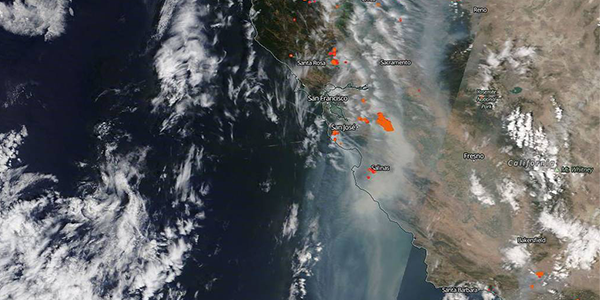A grueling Western heat wave that caused rolling blackouts and sparked wildfires across California is expected to abate somewhat starting Thursday, potentially easing the strain on the state’s overburdened electrical system.
But with temperatures still soaring into the triple digits Wednesday, and smoke from dozens of fires darkening skies, CAISO said it was hoping for conservation efforts like those which helped avoid blackouts Monday and Tuesday.
CAISO CEO Steve Berberich on Wednesday credited the U.S. Navy, companies such as Tesla and household consumers for reducing demand by about 3,000 MW the past two days. That helped prevent what CAISO had predicted would be the most extensive blackouts in state history.
Berberich said the forecast was correct, but unexpected conservation turned things around. CAISO’s control room operators saw a “dramatic flattening” of demand in the afternoons, Berberich said.
“The load pull in the morning on Monday was probably best described as ‘frightening,’” Berberich told reporters Wednesday. “By 1 o’clock, we had 46,000 MW on the system already.”
The 1 p.m. demand was the same as the late-afternoon peak Friday, when rolling blackouts hit hundreds of thousands of customers, he noted.
“Absent the load curve turn at 3 o’clock, we would not have made it,” Berberich said.
The same conditions occurred Tuesday, he said.
Berberich said he hoped consumers would reduce demand by about 2,000 MW on Wednesday afternoon and evening to avoid more rolling blackouts. (See CAISO Blames Blackouts on Inadequate Resources, CPUC.)
In a separate press conference, Gov. Gavin Newsom said Wednesday could be the “last challenging night for CAISO.” Temperatures are predicted to drop into the upper 90s and low 100s starting Thursday.
Beginning last week, high temperatures in many parts of the state shot well above 100 degrees for six days straight. Death Valley set a possible world-record temperature of 130 degrees on Sunday.
At the same time, temperatures in Phoenix, Las Vegas and elsewhere in the West topped 110 degrees, while normally cool cities such as Portland and Seattle experienced unusual heat. The extent of the heat wave dried up electricity from neighboring states that California could have otherwise imported to meet demand.
Berberich and Newsom said efforts had been made inside California to obtain additional electricity by increasing generation at hydroelectric dams, bringing natural gas peaker plants online and reaching out for help to non-CAISO utilities such as the Los Angeles Department of Water and Power.
The unusual heat wave also brought thunderstorms and lightning strikes that started hundreds of fires, including 23 major blazes, some of which consisted of “complexes” of lightning-sparked fires.
The SCU Lightning Complex had burned 85,000 acres in the mountains above the southern San Francisco Bay Area and was only 5% contained by Wednesday afternoon, according to the California Department of Forestry and Fire Protection.
The LNU Lightning Complex near the city of Vacaville had scorched 46,000 acres and was 0% contained on Wednesday. It drove evacuations, rained ash on San Francisco and Sacramento and turned the sky yellow with smoke.




